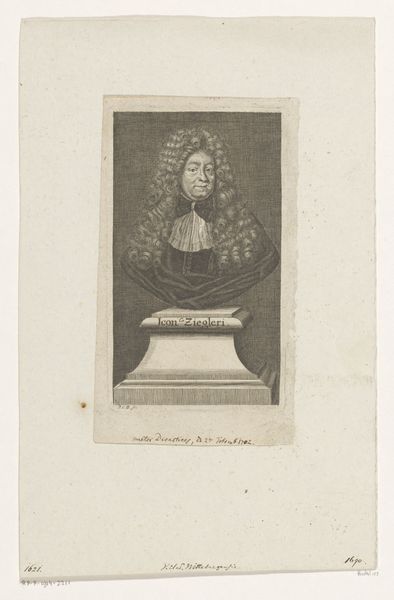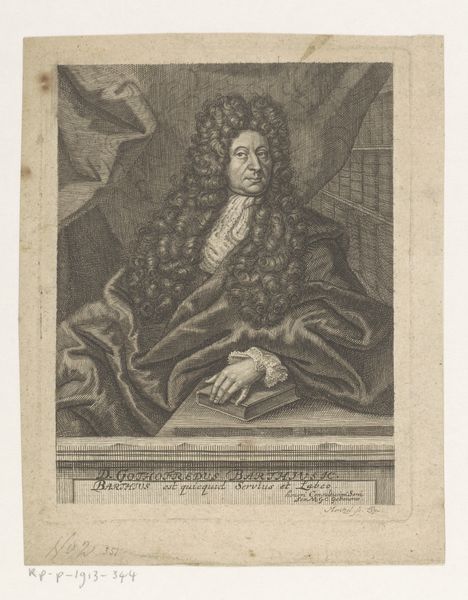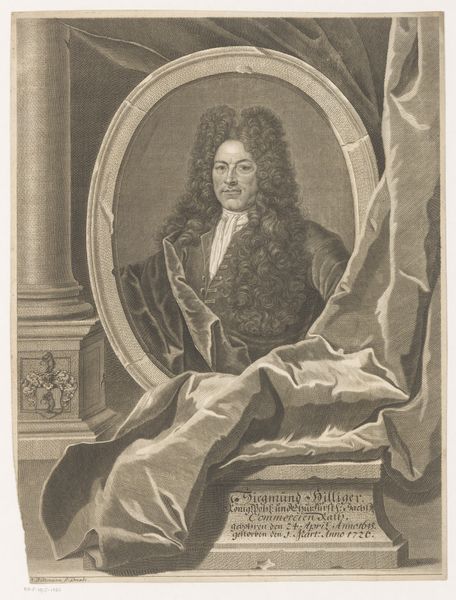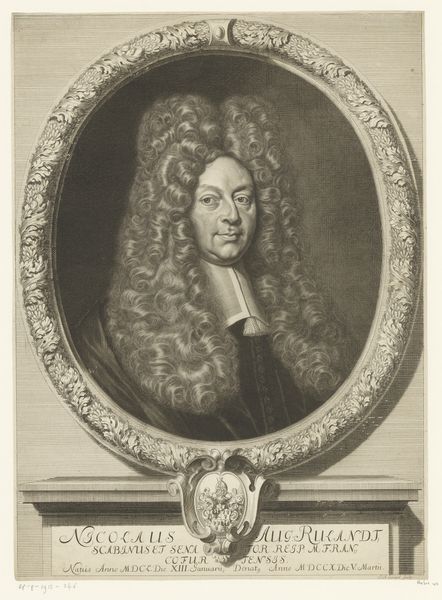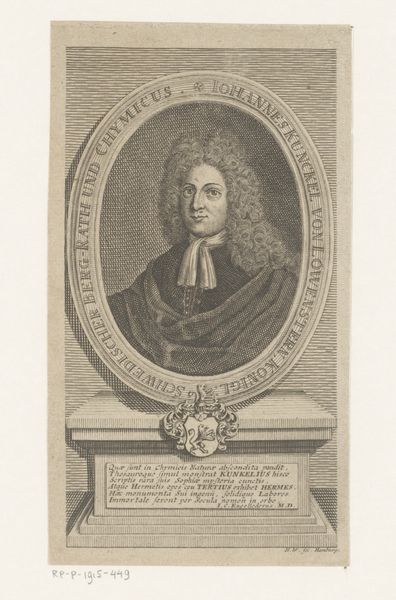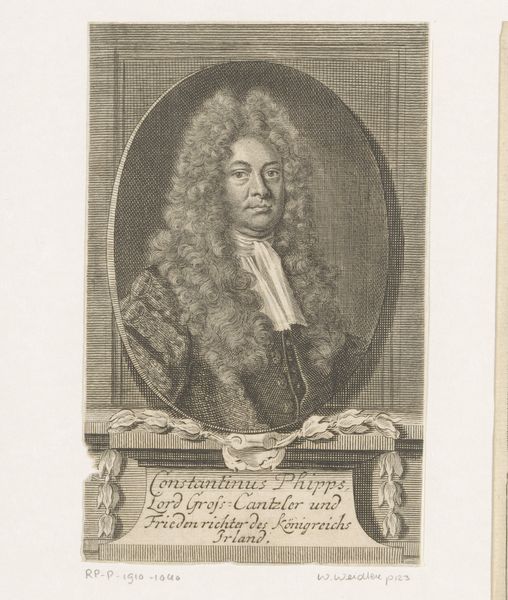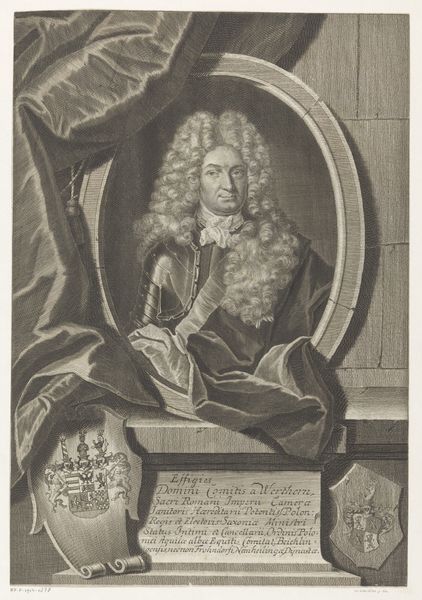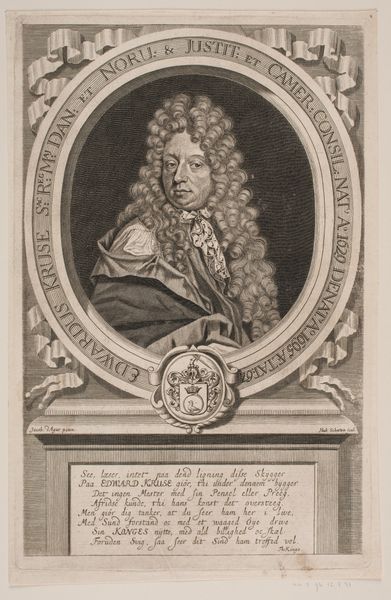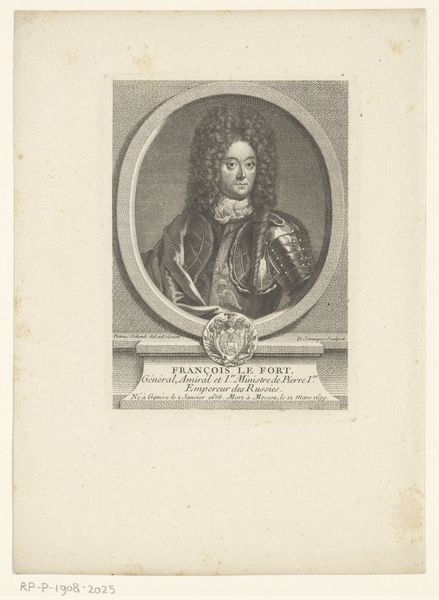
print, engraving
#
portrait
#
baroque
# print
#
19th century
#
history-painting
#
engraving
Dimensions: height 312 mm, width 186 mm
Copyright: Rijks Museum: Open Domain
Curator: Here we have Pierre Drevet’s "Portrait of Charles II of England," an engraving from around 1707 now housed at the Rijksmuseum. What's your initial reaction? Editor: The density of detail immediately strikes me, almost overwhelmingly so. There's such rigid control evident in the medium and rendering but such exuberance in the composition; between the baroque trappings and the armor, it's quite something. Curator: It certainly encapsulates the visual language of power, doesn't it? This print comes some years after Charles II’s death, it’s important to contextualize his reign within the Restoration period following the English Civil War. Images of the monarchy were crucial to re-establishing its authority and projecting an image of stability. Editor: Absolutely, the projection of authority is clear. Charles II as a figure becomes a symbol onto which royalist values are projected and idealized. He isn't merely represented; he's presented as the embodiment of monarchy, divorced from personal nuance or identity beyond what aligns with kingship. How was Drevet's work received in the context of image politics and royalism? Curator: The engraver, Pierre Drevet, was active during a time of sophisticated printmaking, he excelled at portraiture, particularly engravings of French and other European royalty. His prints circulated widely and contributed to constructing and disseminating specific political messages, reinforcing royal power through accessibility. It's fascinating to think how a piece of this kind served the interests of a consolidating regime, subtly pushing ideology. Editor: It really highlights the social life of art and the institutional roles prints held then. Even the portrait conventions signal the need to establish specific societal notions. It seems like everything, down to the decorative crown and armour at the foot of his image is consciously selected to build and broadcast a specific statement. Curator: Yes, but it's also a work of art crafted by Drevet, an artist situated within a system that both patronizes and perhaps subtly directs him. Power dynamics were far from simplistic in this milieu of cultural production. Editor: Indeed, and to interpret this from the angle of identity politics of that era, can make these nuances visible in compelling ways. Thank you for this wonderful walk through history, really brought a fresh set of eyes for analyzing the piece.
Comments
No comments
Be the first to comment and join the conversation on the ultimate creative platform.

